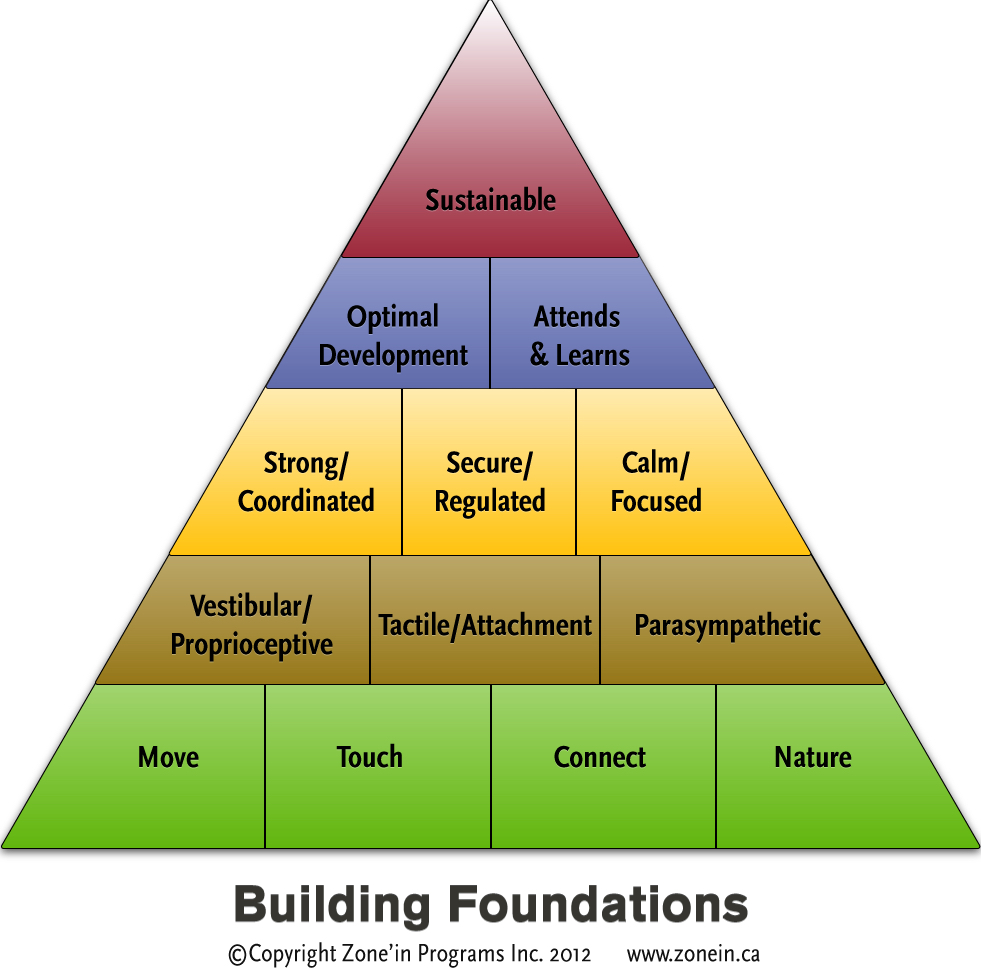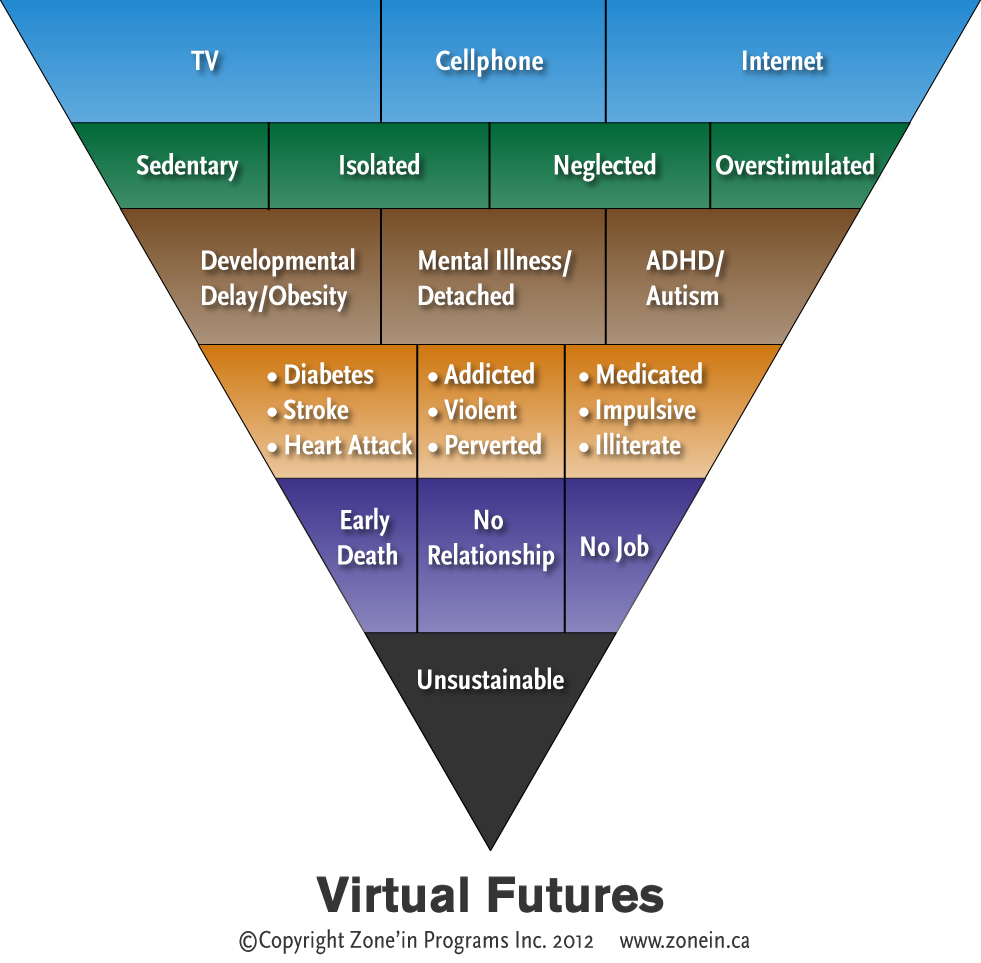Dear [prospective funder],
We, the students of {requesting school name} are inviting your organization to participate in a project of urgent importance. The onslaught of screen-based technologies in the lives of children and youth have resulted in epidemic levels of physical and mental illness. This global health crisis is now threatening the very sustainability of a whole generation. The technology industry’s use of ‘persuasive design’ has resulted in pervasive screen addictions, incapacitating children, youth and adults from successfully managing their devices. As virtual, ‘tech centric’ families and classrooms have become the norm, people are drifting away from what sustains them the most…human connection. Reversing the damage from screen overuse requires homes, schools and communities to come together and shift focus from the screen onto healthy activities. In preparation for removing cell phones from school, [requesting school name] plans to increase student engagement in a variety of movement, nature and social based activities in classrooms, gym, foyer and outside grounds. Increasing access to healthy activities will result in not only improved physical, mental and social skills, but also in improved ability to pay attention and learn. Please join us in this epic adventure to secure sustainable futures for all students, and prepare them to be eventual productive, happy and health members of our shared community.
Executive Summary
The rapid escalation of screen-based technologies in homes and schools has resulted in significant negative outcomes for students, teachers and parents. Students are sedentary and unfit resulting in 1 in 3 developmentally delayed and 1 in 3 obese or overweight. Screens are overstimulating to eyes, heart and brain causing visual impairment, cardiovascular damage, impaired brain development and attention deficit. The illusion of ‘easy education’ has invited Big Tech into schools causing literacy to plumet. Screen overuse by parents and teachers isolates and disconnects children from what they yearn for the most, human love and connection. As a default, children are forming very unhealthy and unnatural attachments to screens (in particular social media) resulting in soaring rates of anxiety, depression, and suicide with over half of teens self-reporting screen addiction. Unrestricted and unsupervised internet use in homes and schools is NOT SAFE as includes access to violent porn and video games, harmful content, incessant cyberbullying, grooming by predators and prolific data privacy infringement. Screen overuse by children and teens a global health crisis of epic proportion largely ignored by every level of health, education and social government. Children and youth have never been sicker nor more unsafe than they are now and the time to act has long passed. Artificial intelligence and addictive design have finally collided to produce a population of brain-dead adults obsessed with technology’s promise and blinded by the inherent perils. We are witnessing the destruction of a whole generation of children and youth at the hands of the technology industry, yet unfortunately are asleep, and can’t seem to wake up. The Creating Sustainable Futures Program (CSFP) invites technology industry corporations to partner with schools in implementing global health initiatives designed to reverse the damage caused by screens on children and youth. Initiatives might include funding for technology management protocols (Yondr pouches) or funding for activities which enhance physical, mental, social and cognitive health (nature immersion, cool outdoor playgrounds, gym equipment, classroom books and movement stations, foyer/cafeteria equipment).
Problem Statement
Children are living in a virtual reality that is devoid of the 4 critical factors they need to grow and succeed: movement, touch, human connection and nature (see below Building Foundations graphic). Technology production corporations who push these addictive devices into schools without concern for student health or well being, need to be held accountable for the irreversible damage they have caused. Billions of dollars are made by these corporations yearly through not only device, program and app sales, but also through proceeds from harvesting and selling student data, often without parental consent. Internet Safety Labs reported in 2022 that 96% of school apps harvest student data creating significant privacy infringement. The rise in problematic behaviors by students secondary to screen overuse, has resulted in concurrent rise in teacher referrals to medical professionals causing a serge in misdiagnosis and over medication of children. Unmanaged and unrestricted screen use in homes and schools comes at a great cost to child safety and health and is not sustainable (see below Virtual Futures graphic). Consequently, at this time ALL screen use in home and school settings should be considered detrimental to child development, behavior and learning and requires immediate action to literally save the lives of our children and youth.


Rationale
A U.S. 2021 study reported that setting and monitoring screen time limits, discussing impacts of screen use, taking frequent breaks, incorporating movement throughout the day, encouraging adults to practice healthy screen use and tapering screen use are effective measures to reduce harmful effects of screentime on children and youth. A Canadian 2022 research article proposes evidence-based recommendations for school-related sedentary behaviours for children and youth recommending replacing sedentary learning activities with non-screen-based learning activities to support student health and wellbeing. These 2 studies mandate schools form not only technology management policy to address declines in student health and wellbeing, but also enact immediate measures to address damage caused by screen overuse including developmental delay, low fitness, sleep deprivation, lack of social confidence/competence, mental illness, screen addiction, illiteracy, attention deficit and poor academic performance. Engagement in the 4 critical factors for child development and learning (movement, touch, human connection and nature) activate sensory and motor systems in the brain and body to improve child development, behavior and learning. Off-center movement stimulates the vestibular system in the brain which activates core stabilizer muscles, an integral precursor to development of motor coordination needed for eventual printing and reading. Resistive movement stimulates the proprioceptive system in the body to strengthen and refine movement patterns needed for literacy and sports proficiency. Touch stimulates mechanoreceptors found in the skin which activate the parasympathetic nervous system to reduce adrenalin (which is produced by the sympathetic nervous system in times of stress), elicit feelings of calmness and improve self-regulation. Human connection activates areas in the brain to release endorphins and dopamine, chemicals which enhance attachment, inducing feelings of security and love. Nature (like touch) activates the parasympathetic system for calming but is also soothing to the sensory system thus improving attention and learning. Technology industry funding for activities which activate these 4 critical factors will enhance child and youth physical, mental, social and cognitive health and would include initiatives such as nature outings, outdoor playgrounds with age appropriate risk elements, gym equipment such as obstacle courses and/or classroom movement devices such as standing tables or elliptical desks.
Challenges
Without sufficient research many schools readily adopted corrupt technology industry standards, threw out textbooks, and heavily invested in screen-based programs. Conflict of interest is rife within the lucrative technology industry who paid education and health professionals to write and promote fraudulent “studies” misrepresenting their products. The technology industry has infiltrated all branches of academia and government as well as hospital and educational institutions imbedding them with self-interest propaganda. The challenge is that no one wants to admit they made a mistake, that the return on their investment is not forthcoming, and that they now have to “go back” to research proven methods of teaching. Yet worldwide, whole countries are reverting back to books and away from screens, and the sooner the better. Imaging studies performed by John Hutton in 2020 showed that children 3-5 years of age who used screens longer than recommended had lower measures of microstructural organization and myelination of white matter pathways in the brain that support language skills and development of literacy and corresponding cognitive assessments. A 2021 study showed children under the age of 8 years comprehend books better when they are in print rather than digital form. Explaining why comprehension is lower with digital screens, Naomi Baron reported in 2017 that when reading digitally students used fewer study strategies such as highlighting, note-taking or bookmarking, so essentially, they remember less. In a 2013 survey 87% of undergraduate students said they prefer paper to digital books and 92% said they concentrate better with paper books. A 2014 study showed that students who took notes on laptops performed worse on conceptual questions than students who took notes on longhand. The capper for removal of screens from schools is the OECD’s statement in 2015 citing countries with high screen use in schools scored the lowest on the PISA grade 9 tests. We’ve known this information for a long time. In addition to the attention and learning benefits of books over screens, our pediatricians for the past 20 years have set strict screen use guideline limits of no more than 2 hours per day which schools routinely not only ignore, but far exceed. A 2021 study reported that to achieve the best health and educational outcomes, school districts should implement some or all of the AAP guidance measures and prioritize them based on local COVID-19 incidence, key stakeholder input, and budgetary constraints.
Procedures
It is suggested that each school enact a Creating Sustainable Futures Program team which consists of interested ‘change maker’ teens along with one school counsellor, teacher or principal in conjunction with their school superintendent. The CSFP team would then implement a data gathering process to determine which initiatives (see below list of examples) their students would like to submit a funding request letter to a technology industry corporation. The funding requests could fall into one or more of the following categories, but should work toward improved engagement in the 4 critical factors for development, behavior and learning e.g. movement, touch, human connection, nature.
- Technology management devices: Yondr pouches, locked containers.
- Nature excursions: beach, forest, biking trails, mountain bikes, BMX course, bus transportation.
- Playground structures: commercial vs. natural, obstacle course, fit core, cardio equipment, parkour, tree houses, teen hangouts, surround seating fire pits.
- Gym equipment: gymnastics, obstacle course, bouncy castles, suspended or climbing devices, ping pong tables, badminton/volleyball nets/balls.
- Classroom equipment: books, elliptical, bike or treadmill desks, standing desks with wobble boards, TRX strapping, chin-up bars, climbing wall.
- Foyer or cafeteria equipment: foosball tables, air hockey tables, pool tables, chess tournament supplies, game supplies.
The technology industry funding request letter written by schools could utilize formatting and information contained in this article. Schools have written permission from myself, Cris Rowan to use any/all information contained in this document in their funding request letter to technology industry corporations with one stipulation, that they send me an email of said letter to crowan@reconnectwebinars.com.
Goals and Outcome Measures
The Creating Sustainable Futures Program is designed to improve child and youth physical, social, emotional, mental and cognitive health, with subsequent improvements in development, behavior and ability to learn. Short term goals measured will be improvement in children’s ability to sustain attention, ability to learn, grades, decrease problematic behaviors, increased printing and reading output speeds, improved attendance, overall reduction in use of entertainment-based or harmful media content e.g. movies, videogames, porn, social media, and increased engagement in movement and nature. Long term goals will be reduction in obesity, decreased incidence of child mental disorders and improved behavior as evidenced by classroom and home management reports. Outcome measures are as follows:
- Attention and Learning – comparative pre and post questionnaires regarding student and teacher’s perception of child or youth ability to initiate academic tasks, sustain focus on tasks and complete tasks.
- Grades – comparative pre and post grades.
- Problematic Behaviors – comparative pre and post records of reported incidents of problematic behaviors including student aggression, acts of violence, defiance, refusal to work, tantrums etc.
- Increased Printing and Reading Output Speeds – comparative pre and post measurements will be taken of printing and reading output speeds.
- Improved Attendance – attendance records.
- Technology Reduction – pre and post duration measurements will be obtained regarding home and school technology usage for TV, internet, videogames, cell phones etc.
- Movement and Nature – comparative pre and post data taken from student and teacher step trackers, outdoor classes and nature outings.
Final Statement
In conclusion, evidence suggests that North American parents and teachers allow children and youth extended periods of internet use using cell phones, tablets, laptops etc. accessing harmful and dangerous media content. Further evidence suggests that this increased technology use is causally linked to increased incidence of child physical, social, emotional, mental and cognitive disorders, as well as poor academic performance and declining literacy. Parents, teachers and clinicians are increasingly presenting children to physicians for assessment of complex behavior disorders that may be linked to the sedentary, isolating, overstimulating and parental and teacher neglect inherent in this use of technology, often resulting in mental health misdiagnosis and overuse of psychotropic medication. The technology industry has purposely designed an addictive product solely for profit which demonstrates proven harm to children and youth without any testing or research. Children are our future, yet there is no sustainable future in virtual reality. It’s time for the technology industry to fund schools to reverse the damage they have caused to not only our children and youth, but also to our future humanity.

Contributing Author
Cris Rowan is a biologist, pediatric occupational therapist, international speaker, author of the book “Virtual Child” and is passionate about changing the ways in which children and youth use screen-based technology. Cris has created www.reconnectwebinars.com to provide research evidenced information on the detrimental impact of screens on 5 child developmental domains: physical, social, emotional, mental and cognitive. Cris can be reached at crowan@reconnectwebinars.com.



